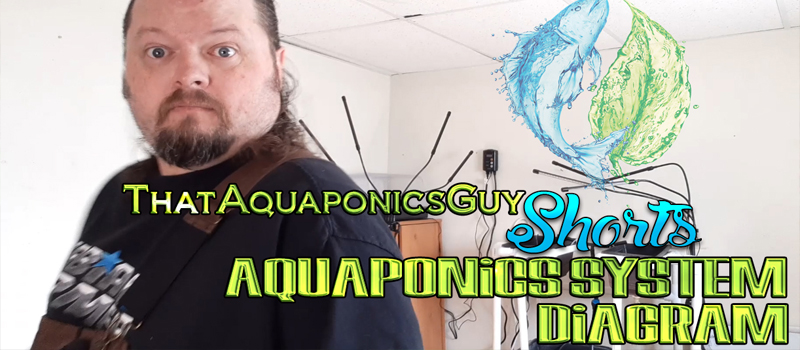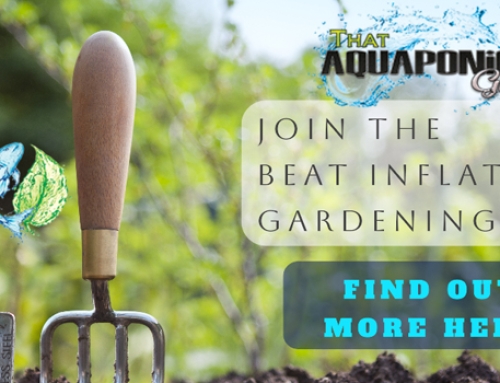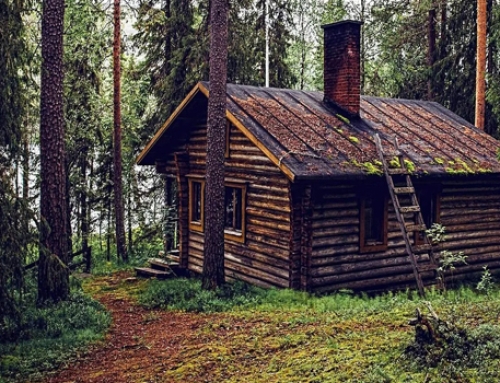Aquaponics System Diagram – Questions Answered
Once you have the concepts straight, doing an Aquaponics System Diagram is essential to be able to gain the right measurements, and components needed for the successful management of your Food Growing System. Each item, measure, and accommodation can be made in a properly drawn up Aquaponics System Diagram.
Going from concept to an actual build, many utilize the drawn out process of an Aquaponics System Diagram. As you would for any important structure like a home or shed, it is always good to have the plans available so that as you are putting things together, you can reference them to make sure that what has been planned for is actually happening. Within the diagram, you can plan for the main items, such as the Tank and Beds, but also include how everything is going to be supported, how that may look, with what materials to do it all, and the exact measurements for each and every component involved in the Aquaponics System’s Diagram.
Aquaponics Systems Diagram – the deeper dive
Whether you use pencil and paper or you take a draw on a computer or tablet, having the plans in an Aquaponics System Diagram form is ultimately helpful for the whole project. We can look to accommodate the known factors, and there’s just something about putting the ideas down in written form that helps one see what they may or may not be missing. Here’s a few ideas of what can be included in such a diagram;
The Widely Known Components
- Fish Tank – Rounded, cornered, size and shape all are important to consider and plan around. What are you going to use? How will that fit with the rest of the system? How can you do maintenance on it or cleaning? Determining this can set the stage for the rest of the Aquaponics System Diagram
- Grow Beds – Same considerations can be made here as you do with the Fish Tank in terms of sizes and shapes. One of the main things to plan for is when the water is in the grow beds that the tank to grow bed water ratio can keep the fish from experiencing any stress. Do you plan to have the beds above the tank, or next to it? How can it accommodate the Bell Siphon and how is the drainage going to be set up with your configuration? Again great to include on the diagram.
- Grow Medium – Not necessarily needing to be included in the diagram or schematics, but the weight of the grow media also needs to be considered when you plan and how you want to plan your build. Each type has it’s own weight constraints that need to be factored in.
- Plants – In and of themselves are going to be an after thought, however, the count of what you can fit in each grow bed, the amount of fish and the resulting size of the tank, all hang on what and how much of the plants you want to grow and harvest.
- Fish – Again not necessary diagram material, but you do have to plan for them and how you are going to keep them alive and thriving in the system needs to be in the planning mix.
Starting out with the main components helps you in getting the rest of what you need in the System to be working out right for you. Again all in the planning process of it all that will feed the Aquaponics System Diagram.
The More Obvious Additions
- The Frame Support – Depending on sizes, configurations, indoor or outdoor placement of the system is essential in the planning and diagramming stage of the materials you look to use in the support framing. Is it metal, wood, plastics, PVC or what? How is it going to work for you? What measurements, and joints, and customizations do you need to do? What do you need to make, and what do you need to buy? All a major part of the diagram details.
- The Water Pump – This is the method on how you are going to get the Ammonia filled water with it’s nitrites into the grow beds to convert into nitrates that the plants like to use and grow with. You need to get one that can move the amount of water needed in the system. Immersible or pass through, whichever you prefer (I am partial to the Immersibles) you can plan for and utilize the piping or if it is a smaller unit the hoses you would need to move the water to where it needs to go.
- Hosing/Pipes – The pipes are what makes everything go, at least that’s what the plumbers keep telling me and it is essential in the Aquaponics System Diagram to detail what is going to move the water, where they are going to be placed, and how they are going to fit and connect into the whole system. This is a vital component to the whole of the Aquaponics System.
- Monitors – pH Levels — Whether it is a handheld “Pen” version or a more elaborate system that is located close to the Fish Tank it is an essential in the management of the system, but not necessarily for the diagram.
Up to this point what we have detailed above, if you have nothing else, you need to have for the basic management of an Aquaponics System. These items cannot be missing and have the system work correctly or successfully. The following, however, can be added for easier flow, faster growths and smoother automation of the system.
The Potentially Hidden Gems that Hum
- Grow Lights – Now this is important only if you have your system indoors or out of direct sunlight. Plants don’t like to grow unless they have some exposure and a great deal of it, to UV rays. How are you going to incorporate them into the build, hanging, clipping or standing? How are you going to get them to do what they need to by turning on and off as needed? Considerations needed to be done.
- Bio Filter – Now this comes into play only when your system is larger and you are using larger fish. The system runs off of the amount of Ammonia that is contained in the water from the fish, which comes mainly from the exhaling of the gills, not necessarily from the fish poop. With the larger fish, the more bio waste you will incur and too much of that will literally Muck Up your system. A Bio Filter between the Fish Tank and the Grow Beds usually assist in the Unmucking of the overall system.
- Water Heaters/Coolers – Depending where you place your system, you will potentially have a need for a heater of the water, to keep the water temps maintained for the vitality of the fish. If it doesn’t have direct sunlight, water tends to cool to room temps and if they be lower than needed you will need the heater, and if warmer some method to cool the water down.
- Monitors – Water Temps — Because temperatures are vital for the fish to thrive, you will need to monitor the temps on an ongoing basis to maintain the right parameters. Whether you go with a simple thermometer or a more robust monitoring system, it is a good idea to plan for it in at the time you draw up the diagram.
- Timers – If you don’t want to be chained down to our system to manually turn on things when they need to be, you will invest in the timers that can at least semi-automate the system for you. Depending on how you are drawing the electricity for the system, a one plug to 4 plug timers are available.
- Automation – If you are the high tech type there are system programs that can be placed on your Aquaponics unit that can completely automate the processes. Sans feeding the fish, all the other monitoring, turning on and off of pumps, filters and lights can all be run thru these specialized computer programs that can even send you timely updates to your phone. Again, not necessary for the diagram, but if that is the direction you want to go, then, begin in the planning stages to do so.
We at ThatAquaponicsGuy are here for you, we have all the above in our Shop Online. And we have already put in the time and effort to make your set up and starting process as smooth as possible. We have for you in our Second Combo of Pocket Guides the actual Aquaponics Manual from start to finish and beyond! In the Manual you will be able to find our Aquaponics System Diagram and what you would need to build your very own. Step-by-Step in easy to follow segments. In addition to building one, we also have what you need to operate and manage one successfully included in the Guide. And you can get our Medical Bushcraft Book as well to boot.






